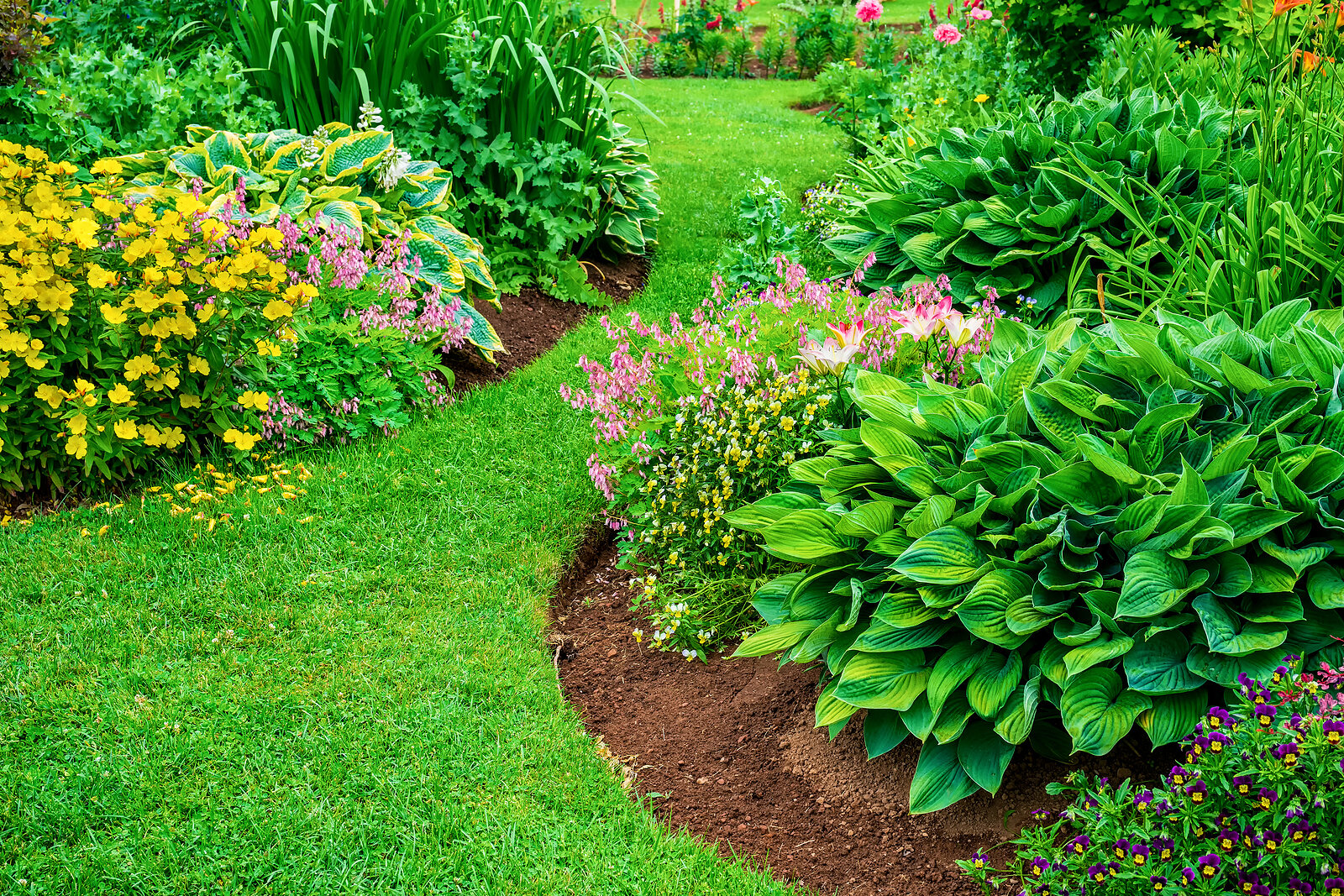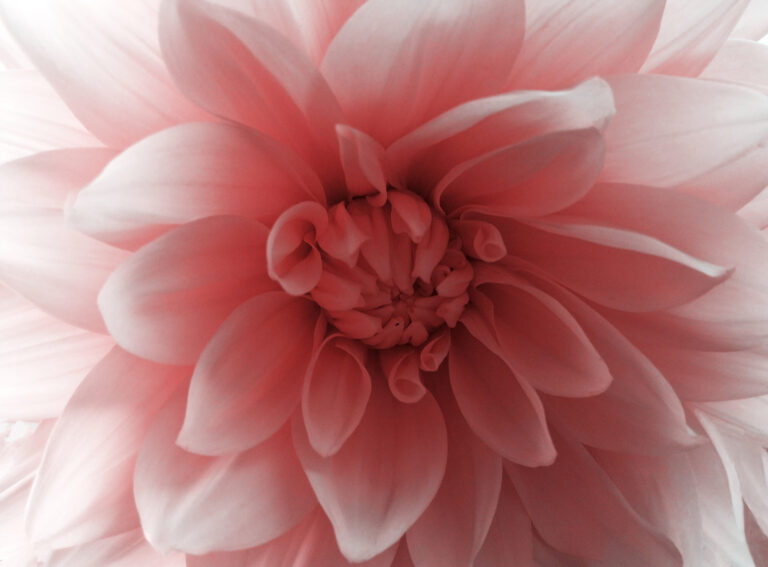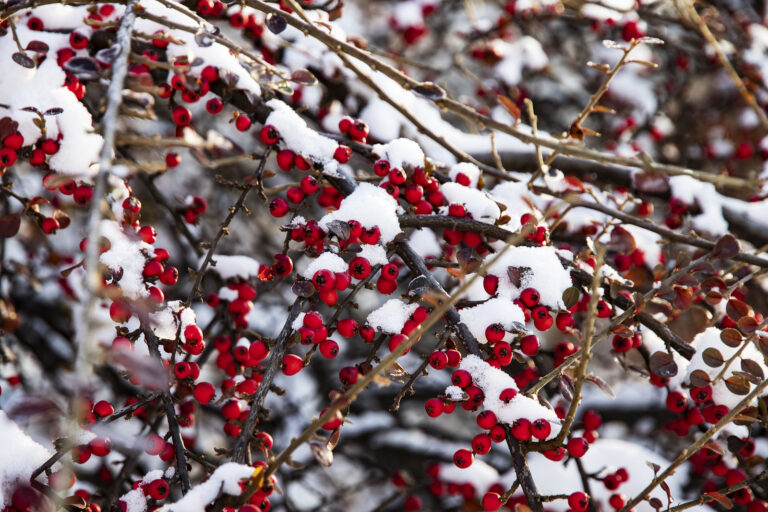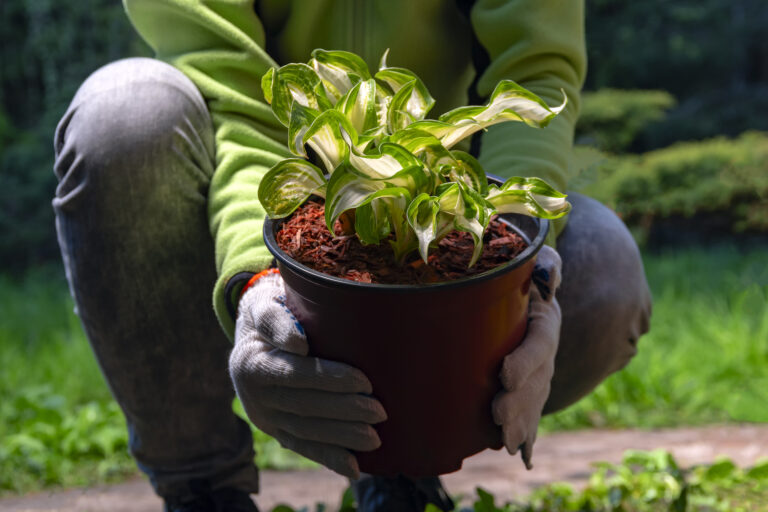How to Prepare an Established Planting Bed for the New Season
Established planting beds–perennial beds, mixed beds of annuals and perennials, and shrub borders–must be readied for each new growing season. This means amending the soil with aged compost, aged manure, fertilizers, and other soil amendments.
The health of plants in a planting bed will directly equate to the health of the soil. Well-established planting beds need yearly soil maintenance–usually in early spring before plants begin their growing season.
To prepare an established planting bed for the growing season you must decide what is going to be planted in the bed. While most planting beds are basically prepared in the same way, some plants have special needs so you will want to be sure the bed is right for the plants you are growing.
For each new growing season and for new plantings later in the season, make sure the planting bed is friable, fertile, and easy to work.
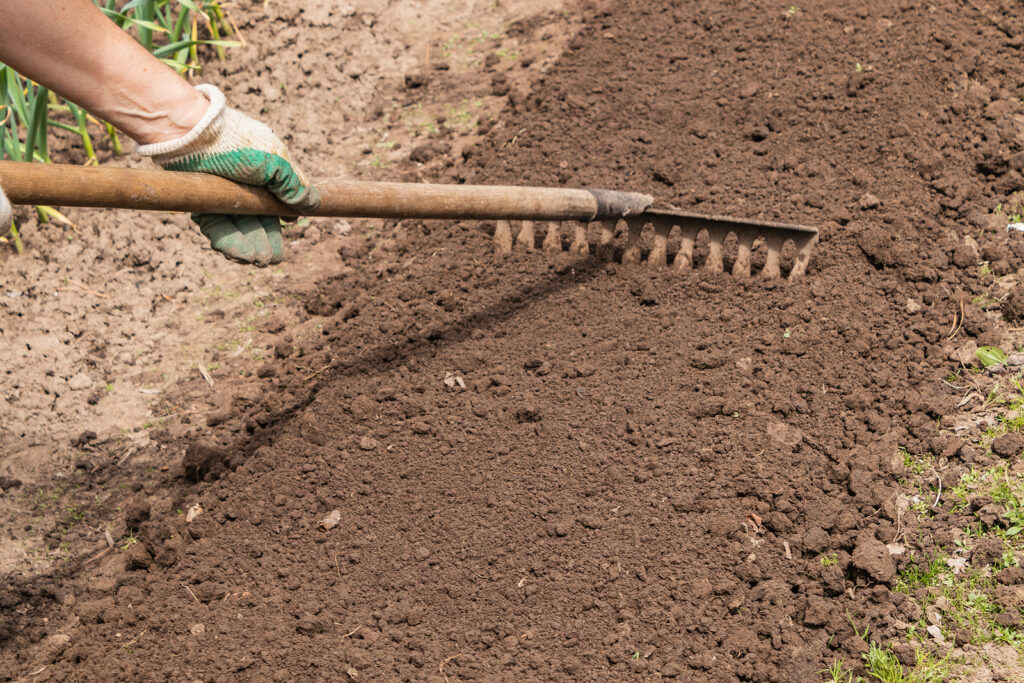
Friable soil
Friable simply means the soil crumbles easily. If you take up a handful of soil and make a fist then open your hand, friable soil will crumble apart. Friable soil is made of aggregates of humus, organic matter, and minerals. Friable soil is well-drained and loose—not sandy and not clay; plant roots easily grow through friable soil.
To make soil friable, add aged compost to the planting bed regularly. Add cow or chicken manure to the bed at least once a year. Soil can also be made friable with the addition of grass clippings, dry leaves, and commercial soil amendments called garden compost, garden soil, or planting mix.
Fertile soil is soil rich in nutrients needed for plant growth. The major plant nutrients are nitrogen, phosphorus, and potassium. Plants also need micronutrients—namely iron, manganese, copper, zinc, boron, and molybdenum. Humus rich soil will be rich in nutrients plants can readily absorb. Humus is a highly decomposed organic matter; organic matter that has been processed by microorganisms.
The best way to encourage the production of humus and fertile soil is to feed your planting beds aged compost on a regular basis. Aged compost will contain some organic fibers. When aged compost is processed—that is eaten and excreted—by soil microorganisms, soil bacteria, and worms, humus will be added to the soil and fertility increased.
Easy-to-work soil is soil that is fertile and friable.

Add aged compost and manure
Prepare established beds by adding a layer of aged compost or commercial organic planting mix across the top of the bed; this often called sheet composting. A 2-inch (5cm) layer of aged compost is best added when the bed is cleared of annuals at the end of a growing season. If the bed consists mostly of perennials and shrubs, compost and manure can be spread around those plants.
Adding compost and other amendments to planting beds in autumn will allow winter rains and melting snow to carry organic matter down into the soil. Sheet composting can also happen in late winter or early spring; then you may want to lightly turn the compost under to encourage further decomposition.
In addition to aged compost or organic planting mix, you can add more nutrients and organic matter to a planting bed by also adding an inch of aged cow or chicken manure across the bed. Aged manure is best added in late autumn or early winter to allow for winter elements to work it well into the soil.
Raking and tilling
The soil in an established bed that has sat through the winter may have formed a crust across the top of the bed. This usually happens as falling rain and snow compact the soil. Breaking the crust with a garden fork or rake or a small, light-weight garden tiller if planting beds are large is important before seeds are sown or transplants set out.
Turn the soil lightly, not deep but shallow. Do this with your garden fork, a steel rake, or a tiller. Early in the season moist soil microorganisms and worms will be deep in the soil and are unlikely to be turned by a steel rake. Later in the season as the soil warms, worms and microorganisms will be closer to the soil surface and may be easily disturbed or injured by cultivation.
Raking and tilling will further worked compost and amendments into the soil. If aged compost was not added in the fall or winter, do it in early spring during cultivation.
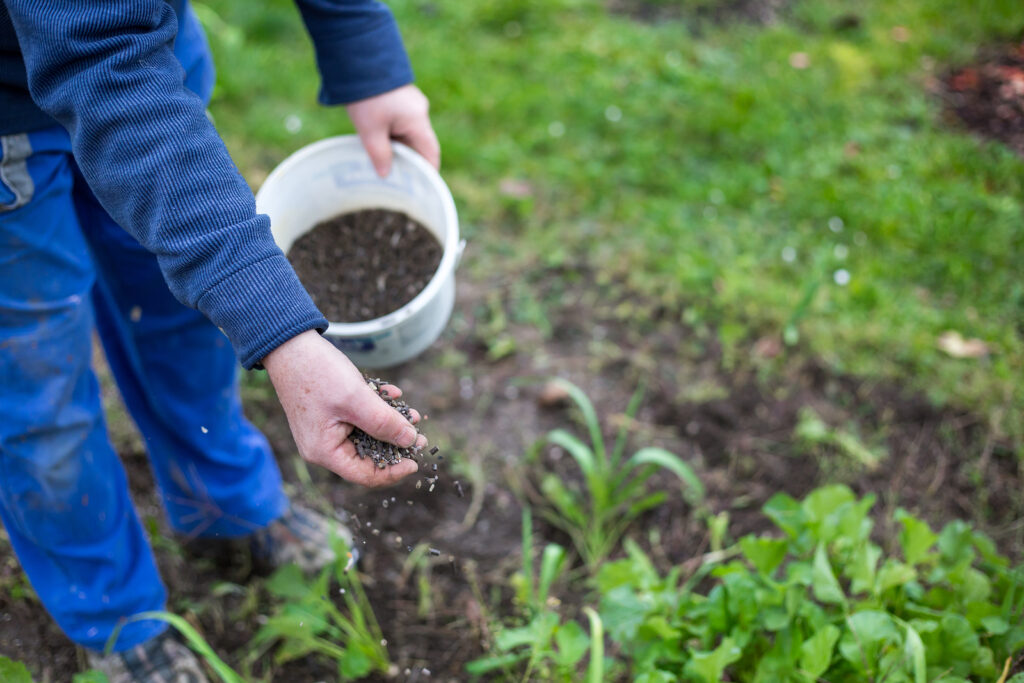
Adding fertilizer
Aged compost will contain all of the nutrients plants need to grow. If seed sowing or transplanting instructions call for the addition of fertilizers, add them after the soil has been lightly cultivated. Fertilizer can be broadcast across the planting bed or added in pinches to planting holes. Turn fertilizers under lightly with a rake.
Remove weeds
Beds that have been lightly cultivated can be allowed to sit a week or two before planting. That will be enough time for weed seed that has been turned up to germinate. Weeds can be hand picked or turned up with a hoe. Just before planting, lift any weeds that have germinated. Be sure to take up weeds root and all.
Rake again
The final step before planting is to rake beds and rake them again. A steel rake will turn up pebbles, rocks, or root fragments in the soil. Raking will remove all clods and lumps in the soil. Raking will turn compost, amendments, and fertilizer into the soil. The bed should be finely finished and level and even across the top when you are finished raking.
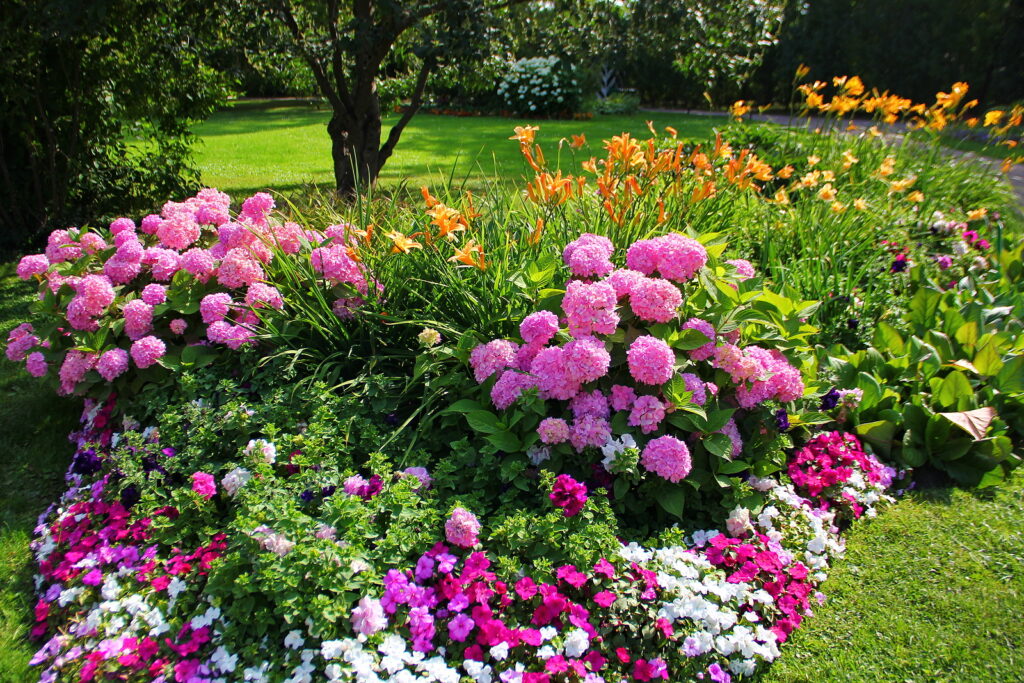
Soil tests
If perennials or shrubs in established planting beds have declined in the past few years or shown persistent signs of disease, a soil test can help you figure out what may be the cause. Soil fertility and the work of soil microorganisms and worms are greatly affected by soil chemistry. A soil test can tell you a lot about soil chemistry—it will tell you if the soil is acid or alkaline. Soil too acidic or too alkaline will inhibit the chemical reaction of mineral elements in soil moisture—the result is almost always poor plant growth.
A soil test can tell you if a planting bed needs lime. Lime is primarily used in the garden as an alkalizer—that is to raise the pH factor and lower the acidity of the soil. Conversely a soil test may tell you that the soil is too alkaline and needs calcium sulfate—which will lower the pH.
Acidic soil is found in humid and wet regions where organic matter is slow to decompose. Alkaline soil is commonly found in semiarid regions, near salt marshes, and in areas where the underlying rocks are limestone.
In the United States, the so-called “lime line” which runs from western Minnesota down through eastern Texas to the Gulf of Mexico divides the country into two parts: to the east one commonly finds acidic soil and to the west alkaline soil.
Knowing soil acidity is important. Soil that is too acid or too alkaline can inhibit the availability of mineral nutrients in the soil to plants and can slow-down the work of beneficial microorganisms and soil bacteria—all of which help plants grow.
When mineral elements are unable to mix with soil moisture and soil nutrients are unavailable to plant roots the elements are said to be “locked up.” When the soil pH is right for the plants growing in the planting bed, plants will thrive.
When in doubt, the addition of aged compost or commercial organic planting mix will almost always move the soil to a neutral pH.
The pH scale
The pH scale number 1 to 14; 1 is extremely acid and 10 or greater is extremely alkaline. A peat bog can have a pH as low as 3; an arid desert can have a pH as high as 10 or 11. A pH of 7 is neutral. Most plants—not all—find a pH of 6.5 to 7 optimal; the same is true for soil microrganisms.
Vegetables that like slightly alkaline soil—6.5 or slightly higher—include asparagus, beans, beets, cabbage, cantaloupe, cauliflower, celery, cucumbers, lettuce, onions, parsnips, peas, rhubarb, and squash.
Vegetables that like slightly acidic soil—5.5 to 6.5—include pumpkins and turnips. Vegetables that can tolerate acidic soil as low as 4.5 include peanuts, potatoes, radishes, sweet potatoes, and watermelon. Blueberries, blackberries, and raspberries also prefer acidic soil.
Old-time gardeners tasted the soil to tell if it needed liming or sulfur. If the soil was sour to the tongue, it was acidic and need liming. If the soil was bitter tasting it was termed “sweet”—the opposite of “sour”; sweet soil is alkaline the opposite of acidic, and benefits from the addition of sulfur.
Adding lime or sulfur to a garden bed will change the soil pH, but only in small increments. You can easily over-apply lime or sulfur so it’s important to follow the directions on package labels. Better than adding lime or sulfur is the addition of aged compost to planting beds. You can never over-apply aged compost to a planting bed.
Also of interest:
How to Make a New Garden Planting Bed

